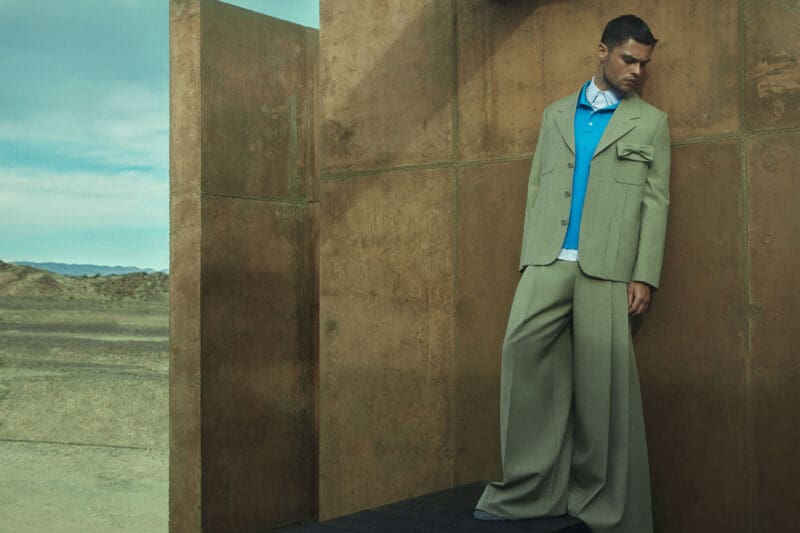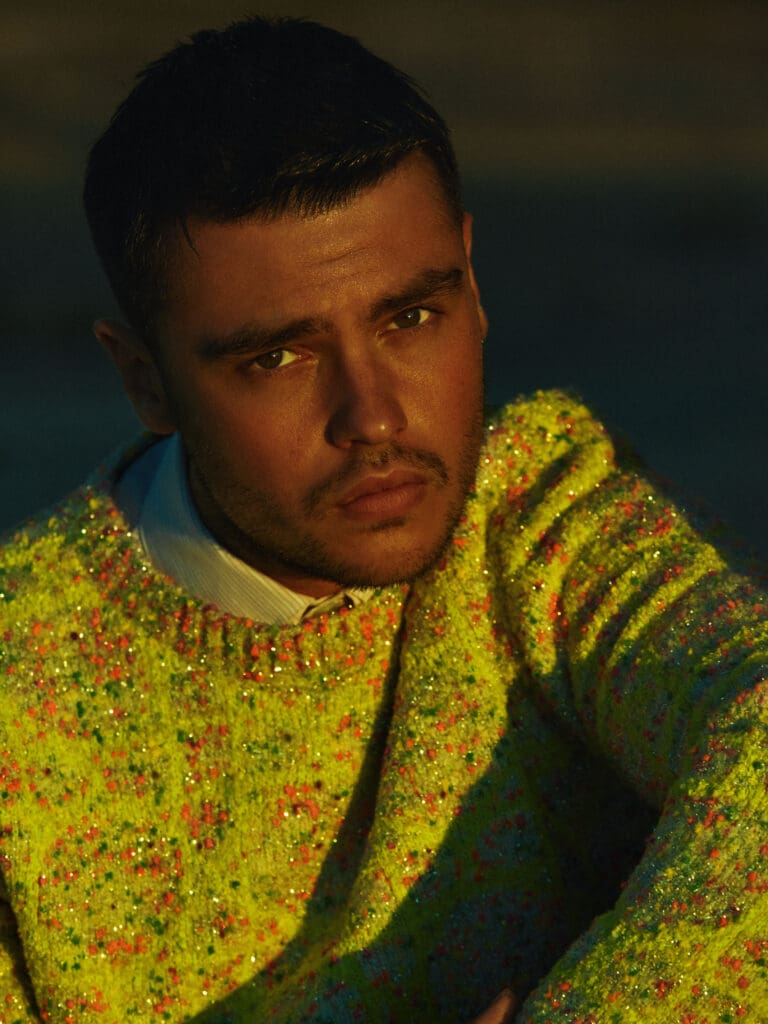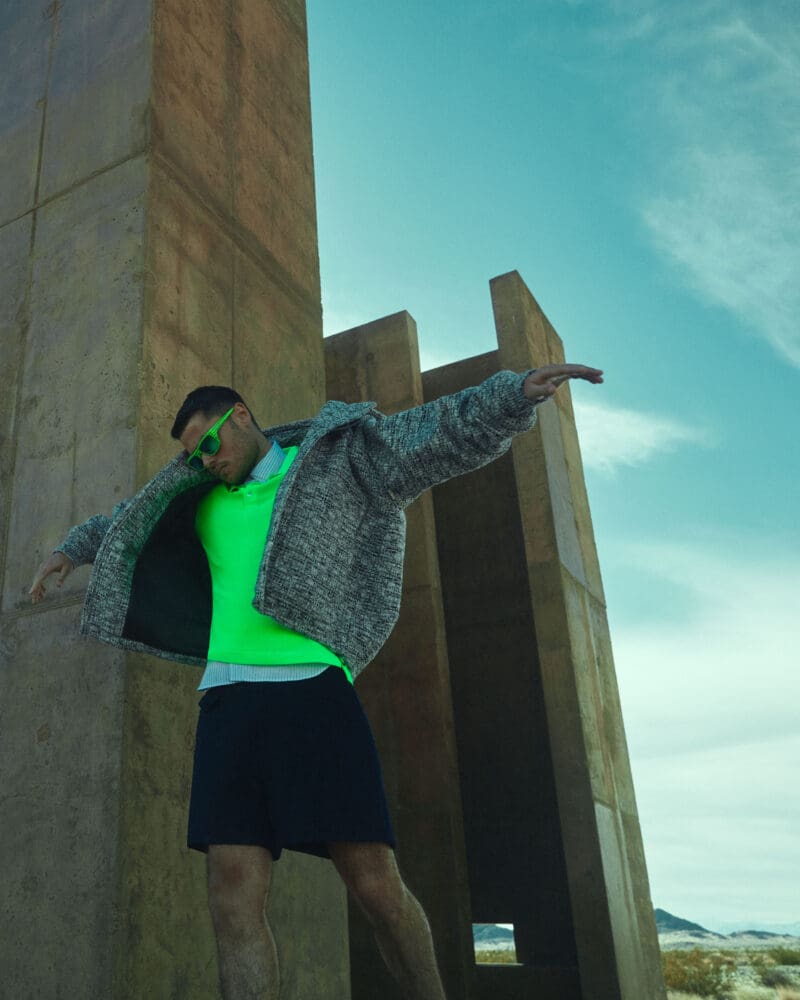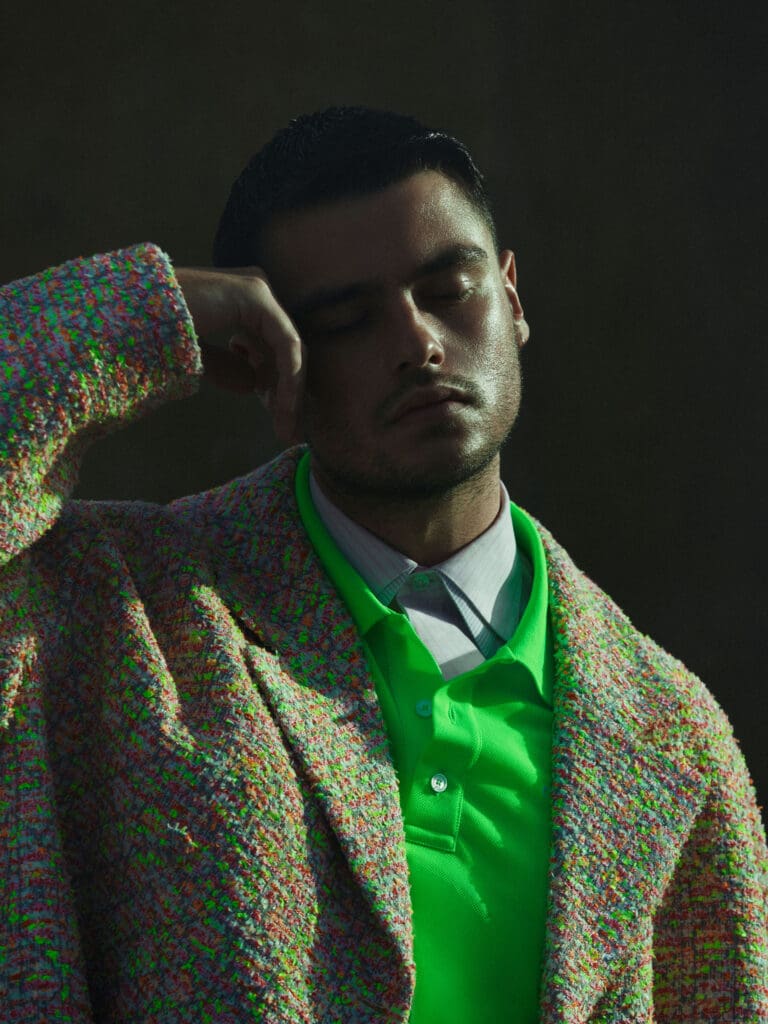From Spring Issue 57
Glass Man sits down with Australian actor Felix Mallard to talk about his lucky break at the age of 16 and the joy of bringing the genius of John Green to life in his latest film
Shakespeare. Keith Haring. Heath Ledger. Bebop jazz. Felix Mallard is looking far and wide when it comes to inspiration but keeping his feet firmly grounded as his acting career takes off. If you’re one of the world’s 260 million Netflix subscribers, then you have probably seen Mallard splashed across the site, advertising his breakout role as Marcus in the hit series, Ginny & Georgia.
But before the astronomical success of the show, Mallard cut his teeth closer to his home on the Australian soap, Neighbours, where the likes of Margot Robbie and Chris Hemsworth got their start.

Photographer: Dennis Leupold
Afterwards, the Melbourne-born creative honed his craft in TV shows like Happy Together, where he plays a Harry Styles-inspired rock star, before appearing in his debut feature film, All the Bright Places, alongside Elle Fanning. Now, Mallard returns to the silver screen to breathe life into John Green’s tender novel, Turtles All the Way Down.
As the 25-year-old reflects on the lonely world of his character, billionaire’s son Davis Pickett Jr, there’s an undeniable sense of warmth in his gratitude to be a part of the project.

Photographer: Dennis Leupold
Can you share a little about your roots in acting and how you got into the craft?
There was always a relentless need to express, a need to make what I was feeling inside, external. I wanted to leave school at 15 to be a musician, and just play with my band and write songs. Then the performing arts came on the radar and I felt like it could be interesting. I got really lucky to have an audition for Neighbours because I was doing a bit of modelling at the time and my agent had a contact. It was only for a very small guest role but this show is an institution.
When I was a teenager and going through a lot of stuff, I just wanted to just dive headfirst into anything. I hadn’t tried acting before, but I just went as hard as I could with it. I don’t even think I had ever learnt lines [laughs]. I was really lucky because one of the directors wanted to sit down with me and work the scene. She could have said ‘cool, thanks’ but she wanted to see if I could take direction and if I had interesting reads on the role. I was lucky enough to get it.

Photographer: Dennis Leupold
Was there a decisive moment you can remember thinking you wanted to be an actor?
When I was doing one of the Neighbours episodes, that’s when I really realised I wanted to act for the rest of my life. I was 16, naive, and struggling to understand the grief my character was experiencing. I was lucky enough that I had this beautiful director who pulled me aside and said ‘look, first of all, when you visit old memories, new feelings pop up.
But more importantly, it’s your job to communicate that to the 10,000 kids who don’t have a dad who are going through this. You can communicate that emotional journey. That’s your job.’ As soon as he said that I went home and immediately spoke to anyone I knew who could give me an acting agent. I didn’t want to do anything else.

Photographer: Dennis Leupold
In Turtles All the Way Down, we see Davis supporting the protagonist, Aza, through her struggles with OCD. What did you learn from your character about how we can be there for others in our own lives?
In Davis I was very lucky that the words were written by John Green on how to support someone. And I was pretty lucky to just embody that. What I’m trying to work on right now personally is listening. And not just listening in the sense of being, like, ‘yeah, I hear you, that’s really hard’. But just being present with it. And, you know, sitting with someone and getting them to express how they’re feeling … being curious, being inquisitive, holding space for people to feel however they feel.
With Davis and Aza, they complement each other so well. Aza is desperate for someone to see her as more than her OCD. And it’s similar for Davis. He needs someone to see him for who he is, and not his money or what he can give them. He just wants to be seen as a human.
I mean, it’s so John Green. It’s got such a beautiful deference for these emotional complexities and such an understanding of what it’s like just to be alive in the world. It’s about growing up; it’s a coming of age story about adolescence and mental health, and specifically one person’s experience with OCD.

Photographer: Dennis Leupold
What was it like working with John Green to bring his novel to life?
It was incredibly humbling. It was a dream come true just to be in the presence of someone so talented. The book is such nuanced storytelling. You know, usually you get a script and you build your emotional tapestry – you do your homework, figuring out who this person is from the clues you’re given. But to have such a beautifully written book as an extra reference was a treat.
I can’t do my job if I don’t understand how Davis fits into Aza’s world, so to be able to go back to the book and go as deep as I want was a joy. You know, I got to go into Shakespeare and look at The Tempest and the beautiful allegory John created.
We have Prospero, this magician with endless power that is relegated to an island and he can’t do anything about it, and it’s so similar to Davis. He’s isolated and incredibly lonely. He has everything in the world and nothing all at once. So, to be able to understand who this man is and go on set and support Isabella [Merced’s] storyline [in her role as Aza] was such a joy.

Photographer: Dennis Leupold
When you first read the script, was there an immediate resonance with Davis or did it grow more slowly over time?
When I first read the script, there was such an emotional understanding of the characters and I definitely related to Davis’ loneliness and need for connection. What I loved about him from the start was his support for Aza. I always want to be involved in telling interesting, nuanced stories that support women and women in film … the types of stories that aren’t necessarily just the traditional boy meets girl.
That’s why I wanted to learn how Davis supports Aza’s self-discovery. But the more time you spend with a character, the more you notice things … how they might react to things, how they walk into a room, all of these little nuances. The process of shooting a film is so interesting because they don’t necessarily always get executed chronologically. You’d love to come to your first day on set knowing everything but on day 15 of a shoot, you might notice the tiniest detail, so it’s always evolving.

Photographer: Dennis Leupold
Davis has a strong connection with artists like Raymond Pettibon, Keith Haring and Jean-Michel Basquiat and we see that throughout the film. Are you an art fan too?
I’ve always loved art. I just saw Keith Haring at The Broad [Los Angeles] and I thought he was brilliant. Coming from Melbourne, there’s such a strong emphasis on graffiti … And real graffiti, you know, trackside and on trains, not just in alleyways. Looking at how Basquiat or Haring take that into the fine art space is interesting.
There’s an artist called Bendik Kaltenborn who does cool block colour prints, but it depends on what day you ask me. Sidney Nolan is so beautiful. What I love about going to galleries is that you can just sit in front of a painting that grabs you and it could be by someone you’ve never heard of.
I went to the Art Gallery of New South Wales recently and I saw this oil painting by Abdul Abdullah where he’s done these rolling green hills, grey skies and massive block letters over the top saying ‘They think they’re the swagman but they’re all squatters and cops’. I just loved it. I love Australian art … all Richard Bell’s Pay the Rent stuff. It’s the story of disenfranchised people. People who need a voice don’t necessarily have any other avenue other than telling their story as loudly and boldly as possible.

Photographer: Dennis Leupold
How about music – I know you like to create playlists for your characters. What tracks got you in Davis’ headspace?
Yeah, I have a playlist on Spotify called ‘Davis is lonely’. I made this little piece of art for the cover, with a spiralling background and a tuatara lizard. Our director Hannah [Marks] saw it and put it in the film, which is so lovely. For the music, I started with whatever John [Green] listed as Davis’ favourites – the Beatles, Otis Redding, Leonard Cohen and Billie Holiday.
And then I added a bit of me in there too … Some Wilson Pickett, Bob Dylan, [Jimi] Hendrix. I think the title says it all, Davis is lonely as hell. And I completely resonated with that. The playlist is a bunch of songs that talk about loneliness, or ones that explore what you think about when you’re lonely. You know, you might dream of love or friendship, or a nice day to take you out of that reality.
Is there a particular genre or character you’d love to play in the future that you haven’t worked on yet?
Absolutely. Heath Ledger kind of laid it all out for us when he said he didn’t want to do the same role twice. He always wanted to do something different and he’s a huge inspiration. Whatever I’m lucky enough to end up doing next, I hope that it’s something that turns what people know of me upside down. Certainly, what I’m trying to audition for are things that surprise people. To do something like that would feel very liberating because people do come to understand where you’re at and the kind of stories that you tell, and that becomes a challenge.
For example, with Ginny & Georgia, I don’t want people to think that they’ve seen it all before the new season comes out. I want to always be doing something different with Marcus, even if certain things on the surface seem similar. I’d love to do a completely different character … maybe something violent, a little more sinister, but honestly, it’s whatever comes across the desk [laughs].
by Christiana Alexakis
Photographer: Dennis Leupold
Stylist: Christopher Campbell
Groomer: Candice Birns
Creative Producers: Sabrina Patino and Sho Stewart
Digi: Kevin Leupold
Shot on location at Folly Mojave
Special thanks to architect Malek Alqadi and property manager Hillary Fleur
